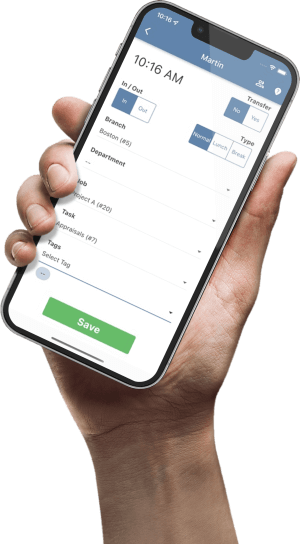
Takt Time in Modern Operations
In the pursuit of operational excellence, small businesses are constantly seeking a mechanism to perfectly synchronize their internal capabilities with the external demands of the market. This synchronizing force is Takt Time, a foundational concept in lean methodology that functions as the critical link between production and customer demand. Often described as the "heartbeat" or "pulse" of a lean system, Takt Time transcends its function as a simple metric to become a guiding philosophy for creating value and eliminating waste.
In This Article
Foundational Principles of Takt Time
This part establishes the core identity of Takt Time, dissecting its definition, historical journey, and the precise mechanics of its calculation. It moves beyond superficial explanations to build a robust conceptual foundation for the reader.
Defining Takt Time: The Voice of the Customer in Production
Takt Time is the calculated pace required to produce a good or service to perfectly meet the rate of customer demand. It represents the maximum amount of time that can be spent producing a single unit to fulfill customer orders within a given period. It is crucial to distinguish that Takt Time is not a measurement of how long a task actually takes to complete—a metric known as Cycle Time—but rather the rate at which work must be completed to satisfy the customer.
The term itself provides a powerful clue to its function. It originates from the German word Takt, which translates to "beat," "pulse," "rhythm," or "cadence," most often in a musical context. This etymology is fundamental, as it underscores Takt Time's role as the regulating rhythm for an entire production system, much like a conductor's baton keeps an orchestra in sync. Conceptually, Takt Time provides the "heartbeat of a lean production system".
Historical Context: From German Aviation to the Toyota Production System
While widely associated with Toyota, the principles of Takt Time predate their use in Japanese manufacturing, originating in the German aircraft industry during the 1930s. This knowledge was transferred to Japan, where it was adopted and profoundly refined by Toyota under the leadership of Taiichi Ohno, widely regarded as the "father of the Toyota Production System (TPS)." Within Toyota, Takt Time became a central element of the Just-in-Time (JIT) production pillar, ensuring that parts were produced only as needed, thereby eliminating the waste of overproduction.
The Takt Time Calculation: A Precise Breakdown
The calculation of Takt Time is governed by a straightforward formula, but its accuracy hinges on the meticulous definition of its two variables.
Calculating Net Available Production Time
This variable represents the actual time that a process is scheduled and available for production. You start with gross time and subtract all planned stops.
- Meal breaks (e.g., a 30-minute lunch)
- Shorter, paid breaks (e.g., two 15-minute tea breaks)
- Regular team meetings (e.g., a daily 10-minute startup meeting)
- Scheduled and planned maintenance activities
Worked Example (Daily):
- Gross Shift Time: 8 hours = 480 minutes
- Planned Stop Deductions: 30 min (lunch) + 2 × 15 min (breaks) + 10 min (team meeting) = 70 minutes
- Net Available Production Time = 480 minutes - 70 minutes = 410 minutes per day.
Calculating Customer Demand
This variable is the number of units that the customer requires within the same time frame used for the available time calculation. This figure should be based on actual customer orders or a robust sales forecast, not on the production line's maximum capacity.
Putting It Together (Single Product Example)
Using the values from the examples above:
- Net Available Production Time: 410 minutes
- Customer Demand: 205 widgets
This result means that to meet customer demand exactly, the production process must output one finished widget every 2 minutes.
The Takt Time Ecosystem: Context and Comparison
This part situates Takt Time within its operational context, contrasting it with other critical time-based metrics to prevent common misunderstandings and highlight its unique role.
Takt Time vs. Cycle Time vs. Lead Time: A Critical Distinction
A clear understanding of the differences between Takt Time, Cycle Time, and Lead Time is essential for effective operational management. These terms are frequently confused, yet they measure distinct aspects of the value stream.
- Takt Time (The Demand Rate): The rate at which a product must be completed to meet customer demand. It answers: "How fast do we need to be?"
- Cycle Time (The Production Rate): The actual, measured time it takes to produce one unit. It answers: "How fast are we actually?"
- Lead Time (The Customer Experience): The total time from when a customer places an order until they receive it. It answers: "How long does the customer wait?"
The strategic interplay between Takt Time and Cycle Time reveals the health of the production system:
- If Cycle Time > Takt Time: The process is too slow to meet customer demand. This immediately identifies a bottleneck.
- If Cycle Time < Takt Time: The process is running faster than required. This creates a risk of overproduction and excess inventory.
- If Cycle Time = Takt Time: The process is perfectly balanced with customer demand. This is the ideal state in a lean system.
| Metric | Definition | Operational Focus | Driving Factor |
|---|---|---|---|
| Takt Time | The maximum allowable time to produce one unit to meet customer demand. | How fast do we need to be? | Customer Demand |
| Cycle Time | The actual time it takes to produce one unit from start to finish. | How fast are we actually? | Internal Process Capability |
| Lead Time | The total time from when a customer places an order until they receive it. | How long does the customer wait? | Entire Value Stream |
Strategic Implementation and Operational Value
This part transitions from theory to practice, detailing the tangible benefits of a Takt-driven system and providing a practical roadmap for implementation.
The Strategic Benefits of a Takt-Driven System
- Bottleneck Identification: Any process step with a cycle time longer than the Takt Time is immediately and visibly identified as a constraint.
- Waste (Muda) Reduction: The primary benefit is its direct assault on overproduction. By pacing production to match what is needed, it prevents the creation of excess inventory.
- Enhanced Production Flow: Takt Time is a critical enabler of one-piece flow, drastically reducing work-in-progress (WIP) inventory.
- Improved Predictability: The stable "drumbeat" of a Takt-driven system creates a highly predictable production environment, boosting on-time delivery performance.
- Optimized Resource Allocation: It helps managers determine the correct number of operators and machines required to meet customer demand, preventing overstaffing and understaffing.
- Increased Quality: A stable pace allows operators to focus on performing their tasks correctly, reducing process variability and defects.
A Practical Guide to Takt Time Implementation
- Data Collection & Demand Analysis: Gain an accurate understanding of customer demand by analyzing sales cycles and historical order data.
- Calculate Net Available Time: Meticulously determine the actual production time available per shift or per day.
- Calculate Takt Time: Apply the core formula to establish the required production pace.
- Assess Current State (Measure Cycle Times): Map the current production process and physically measure the actual cycle time for each individual step.
- Identify Gaps and Bottlenecks: Compare the measured cycle time of each process step to the calculated Takt Time.
- Balance the Line and Standardize Work: Use lean techniques to reallocate work and bring all cycle times at or below the Takt Time.
- Implement Visual Management: Make the rhythm visible with tools like large digital timers displaying the Takt countdown.
- Train and Engage Staff: Educate all employees on the concept of Takt Time and involve them in the process.
- Continuous Monitoring and Adjustment: Recalculate Takt Time periodically to reflect changes in customer demand.
Navigating the Challenges of Takt Time Adoption
While the benefits are significant, implementing Takt Time is not without its challenges. Proactively understanding and planning for these common obstacles is crucial for success.
| Challenge | Description | Strategic Mitigation |
|---|---|---|
| Demand Variability | Unpredictable spikes or drops in customer orders can make a fixed production pace insufficient or excessive. | Implement production leveling (Heijunka). Develop flexible systems with cross-trained employees and maintain strategic buffer inventories. |
| Process Variability | In high-mix or customized environments, applying a single Takt Time is difficult. Unplanned events like breakdowns also disrupt the rhythm. | Invest in Total Productive Maintenance (TPM) to enhance equipment reliability. Use Standardized Work to minimize process variation. |
| Resource Constraints | Insufficient equipment, materials, or skilled labor can create immovable bottlenecks. | Conduct a thorough capacity analysis before implementation. This may require investment in new resources or process optimization. |
| Organizational Resistance | Employees may perceive Takt Time as a rigid mandate that increases pressure and threatens their autonomy. | Employ robust change management. Clearly communicate the benefits of a stable work environment and involve employees in the process. |
Takt Time as a Catalyst for Lean Excellence
Takt Time does not exist in a vacuum. It is a central principle that integrates with and enables other core components of a lean enterprise.
Synchronizing with Heijunka (Production Leveling)
Heijunka is the lean practice of leveling the type and quantity of production over a fixed period. Takt Time is a prerequisite for Heijunka, as it provides the foundational data point for the entire leveling process. Heijunka acts as a protective shield for Takt Time, functioning as the shock absorber that insulates the production floor from external demand volatility. Takt Time sets the ideal pace; Heijunka creates the stable conditions necessary to achieve that pace consistently.
Anchoring Standardized Work
Takt Time is one of the three foundational pillars upon which Standardized Work is built. The three core elements are:
- Takt Time: The required pace of production.
- Work Sequence: The precise, step-by-step order of operations.
- Standard In-Process Stock: The minimum necessary inventory to keep the process flowing.
The relationship is direct: the entire documented Work Sequence must be designed so that it can be completed within the Takt Time. This provides the external discipline that drives the internal design of every job on the line.
Driving Kaizen (Continuous Improvement)
Kaizen, the philosophy of continuous improvement, is energized and focused by Takt Time. The gap between the required pace (Takt Time) and the actual pace (Cycle Time) serves as the primary trigger for Kaizen activities. It provides a specific, measurable target for improvement efforts, transforming Kaizen from a "good-to-do" project into a "must-do," essential operational function.
Takt Time Across Industries: A Sectoral Analysis
While born in manufacturing, the core principles of Takt Time are remarkably versatile and have been successfully adapted to a wide range of industries.
| Industry Sector | Typical 'Unit of Demand' | Interpretation of 'Available Time' | Primary Strategic Use |
|---|---|---|---|
| Manufacturing | Physical Product | Factory shift time minus planned stops | Pacing the production line, line balancing |
| Healthcare | Patient Discharge, Prescription, Consultation | Clinic operational hours, shift duration | Staffing models, managing patient flow |
| Software Development | Feature, User Story, Release | Sprint duration, release cycle length | Release cadence, capacity planning, WIP management |
| Service Operations | Handled Call, Processed Application | Agent shift time minus breaks, office hours | Service level management, staffing, queue management |
Conclusion: The Enduring Rhythm of Takt Time
Takt Time is demonstrably more than a simple calculation; it is a profound operational philosophy that instills the voice of the customer directly into the DNA of an organization. By translating market demand into a tangible, rhythmic pulse, it provides an unambiguous target for production, service delivery, and knowledge work alike. Its power lies not only in setting the pace but also in its function as a master diagnostic tool.
Its adaptability across sectors highlights the universality of its core principle: to align an organization's capacity with its customers' needs. In an era of increasing market volatility and demand for agile, responsive business models, the disciplined rhythm of Takt Time remains an indispensable tool for achieving operational excellence and sustained competitive advantage.
Optimize Your Manufacturing Operations
Ready to sync your production with customer demand and eliminate waste? Discover how TimeTrex can provide the tools you need to implement lean principles like Takt Time and drive efficiency in your manufacturing business.
Learn More About TimeTrex for ManufacturingDisclaimer: The content provided on this webpage is for informational purposes only and is not intended to be a substitute for professional advice. While we strive to ensure the accuracy and timeliness of the information presented here, the details may change over time or vary in different jurisdictions. Therefore, we do not guarantee the completeness, reliability, or absolute accuracy of this information. The information on this page should not be used as a basis for making legal, financial, or any other key decisions. We strongly advise consulting with a qualified professional or expert in the relevant field for specific advice, guidance, or services. By using this webpage, you acknowledge that the information is offered “as is” and that we are not liable for any errors, omissions, or inaccuracies in the content, nor for any actions taken based on the information provided. We shall not be held liable for any direct, indirect, incidental, consequential, or punitive damages arising out of your access to, use of, or reliance on any content on this page.
About The Author

Roger Wood
With a Baccalaureate of Science and advanced studies in business, Roger has successfully managed businesses across five continents. His extensive global experience and strategic insights contribute significantly to the success of TimeTrex. His expertise and dedication ensure we deliver top-notch solutions to our clients around the world.
Time To Clock-In
Start your 30-day free trial!
Experience the Ultimate Workforce Solution and Revolutionize Your Business Today
- Eliminate Errors
- Simple & Easy To Use
- Real-time Reporting

Saving businesses time and money through better workforce management since 2003.
Copyright © 2025 TimeTrex. All Rights Reserved.
